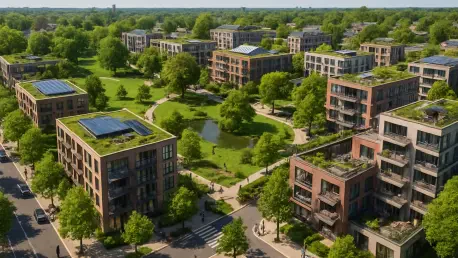In the heart of Central Luzon, a transformative vision for sustainable urban growth is taking shape, positioning Clark as a leading example of eco-conscious development in the Philippines, amid rapid urbanization and escalating environmental concerns. The region has emerged as a testing ground for innovative green infrastructure and forward-thinking urban planning. Through strategic partnerships and a commitment to sustainability, Clark is not just adapting to modern challenges but actively shaping a blueprint for future-ready cities. This remarkable progress stems from collaborative efforts between key stakeholders who are determined to balance growth with environmental stewardship. Their work highlights a critical shift toward integrating green practices into the fabric of urban life, ensuring that development today does not compromise the livability of tomorrow. As this momentum builds, Clark stands as a beacon of hope, demonstrating that sustainable urbanization is both achievable and essential for long-term prosperity in a densely populated nation.
A Collaborative Push for Sustainability
The drive toward green urban development in Clark is fueled by a powerful alliance between the Bases Conversion and Development Authority (BCDA) and the Philippine Green Building Council (PHILGBC). This partnership has become a cornerstone for advancing environmentally responsible practices, emphasizing the creation of livable, low-carbon communities. Leaders from both entities have articulated a shared vision of transforming Clark into a model of sustainability, where infrastructure meets the dual goals of functionality and ecological balance. Their joint efforts focus on embedding green building standards into the region’s rapid growth, ensuring that new projects prioritize energy efficiency and nature-based solutions. By fostering dialogue among public and private sector players, this collaboration sets a precedent for how coordinated action can address the pressing challenges of urbanization. Clark’s emergence as a hub for such initiatives underscores the importance of unified leadership in tackling climate-related issues on a regional scale.
Beyond the strategic alignment, this partnership has yielded tangible platforms for knowledge sharing and advocacy. Events organized by BCDA and PHILGBC have brought together experts and policymakers to discuss actionable strategies for sustainable development. These gatherings serve as catalysts for raising awareness about the urgency of adopting green practices before unsustainable patterns take root in Central Luzon. The emphasis on education and engagement ensures that stakeholders at all levels understand the long-term benefits of eco-friendly design, from reducing carbon footprints to enhancing quality of life. Clark’s role as the focal point of these discussions amplifies its status as a pioneer, offering insights that could influence urban planning across the country. This proactive approach highlights how collaboration can bridge the gap between policy and practice, paving the way for systemic change in how cities are built and maintained.
Showcasing Green Infrastructure in Action
Clark’s commitment to sustainability is vividly demonstrated through its cutting-edge infrastructure projects, which balance innovation with environmental responsibility. Facilities managed by BCDA, such as the Aquatics Center and Athletics Stadium in New Clark City, exemplify state-of-the-art design that prioritizes energy efficiency and minimal ecological impact. These structures stand as proof that high-performance buildings can coexist with green principles, serving as functional spaces while adhering to strict sustainability standards. Additionally, Clark International Airport has earned recognition as the only airport in the Philippines with EDGE certification, a globally acknowledged benchmark for eco-friendly architecture. Such achievements reflect a deliberate effort to integrate green technology into public infrastructure, setting a high standard for future developments in the region and beyond.
The practical application of sustainable design in Clark extends beyond individual projects to a broader vision of urban planning. BCDA’s focus on creating master-planned districts incorporates low-carbon strategies and nature-based solutions, ensuring that growth does not come at the expense of the environment. This holistic approach addresses the unique challenges of rapid urbanization in Central Luzon, where unchecked development could lead to long-term ecological harm. By showcasing these initiatives, Clark provides a replicable model for other regions grappling with similar issues, demonstrating that profitability and excellence need not conflict with environmental goals. The visible success of these projects serves as an inspiration, encouraging policymakers and developers to rethink traditional approaches to urban expansion and embrace sustainability as a core principle of progress.
Building a Legacy of Environmental Stewardship
Reflecting on the strides made in Clark, it becomes evident that the region has laid a strong foundation for sustainable urban development through innovative projects and strategic alliances. The collaboration between BCDA and PHILGBC has proven instrumental in driving meaningful change, embedding green principles into the core of infrastructure planning. Looking ahead, the focus should shift to scaling these efforts, ensuring that the lessons learned in Clark inform national policies and inspire other cities to adopt similar practices. Expanding educational initiatives and public-private partnerships will be crucial in maintaining this momentum, as will securing funding for green technologies. Additionally, continuous monitoring of environmental impacts can help refine strategies over time. Clark’s journey offers a compelling case study, and the next steps involve leveraging this success to advocate for broader systemic reforms, ensuring that sustainable urbanization becomes a norm rather than an exception across the Philippines.









